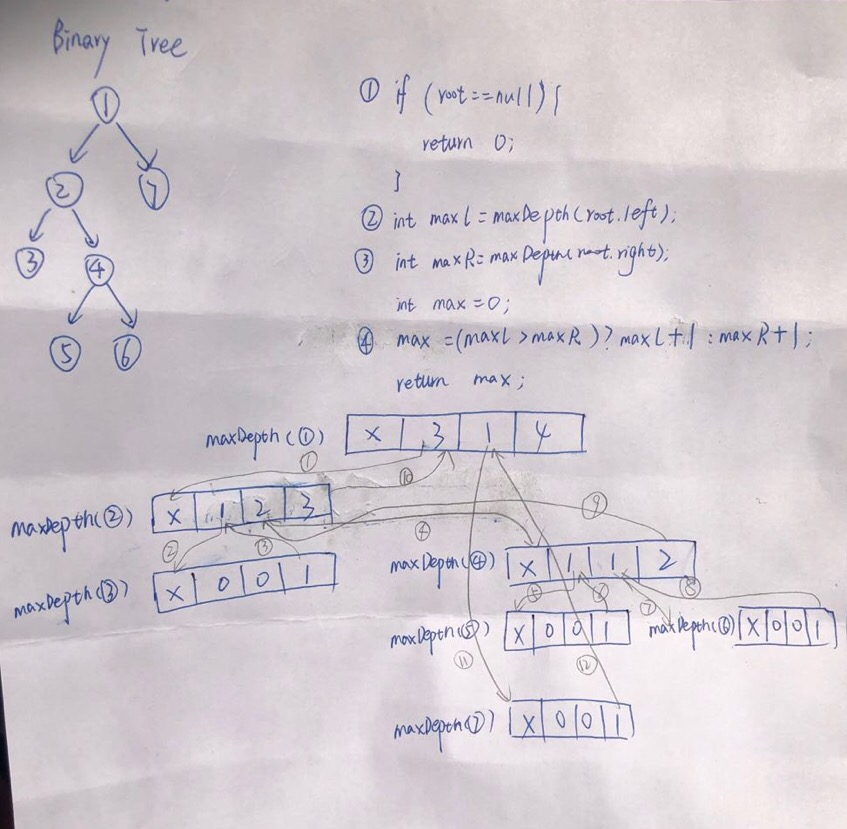https://leetcode-cn.com/problems/maximum-depth-of-binary-tree/
给定一个二叉树,找出其最大深度。
二叉树的深度为根节点到最远叶子节点的最长路径上的节点数。
说明: 叶子节点是指没有子节点的节点。
示例:
给定二叉树 [3,9,20,null,null,15,7],
3<br /> / \<br /> 9 20<br /> / \<br /> 15 7<br />返回它的最大深度 3 。
递归(DFS):
/**
* Definition for a binary tree node.
* public class TreeNode {
* int val;
* TreeNode left;
* TreeNode right;
* TreeNode() {}
* TreeNode(int val) { this.val = val; }
* TreeNode(int val, TreeNode left, TreeNode right) {
* this.val = val;
* this.left = left;
* this.right = right;
* }
* }
*/
class Solution {
public int maxDepth(TreeNode root) {
if(root == null){
return 0;
}
int max = 0;
int maxL = 0;
int maxR = 0;
//左子树深度
maxL = maxDepth(root.left);
//右子树深度
maxR = maxDepth(root.right);
max = maxL>maxR?maxL+1:maxR+1;
return max;
}
}
把握一点,树的深度 = max(左子树深度,右子树深度)+1
终止条件:当前为空
复杂度分析
时间复杂度:O(n), 我们每个结点只访问一次,因此时间复杂度为 O(N)
空间复杂度:
最坏情况下,树是完全不平衡的,例如每个结点只剩下左子结点,递归将会被调用 N 次(树的高度),因此保持调用栈的存储将是 O(N)。
最好情况下(树是完全平衡的),树的高度将是 log(N)。因此,在这种情况下的空间复杂度将是 O(log(N))
迭代(BFS)
/**
* Definition for a binary tree node.
* public class TreeNode {
* int val;
* TreeNode left;
* TreeNode right;
* TreeNode() {}
* TreeNode(int val) { this.val = val; }
* TreeNode(int val, TreeNode left, TreeNode right) {
* this.val = val;
* this.left = left;
* this.right = right;
* }
* }
*/
class Solution {
public int maxDepth(TreeNode root) {
if(root == null){
return 0;
}
Queue<TreeNode> queue = new LinkedList<>();
queue.offer(root);
int depth = 0;
while(!queue.isEmpty()){
int n = queue.size();
while(n>0){
TreeNode node = queue.poll();
n -- ;
if(node.left!=null){
queue.offer(node.left);
}
if(node.right!=null){
queue.offer(node.right);
}
}
depth ++;
}
return depth;
}
}
实际就是树的层次遍历代码每层的节点从队列全部弹出后,depth++
- 时间复杂度:O(n)
- 空间复杂度:O(width),树的宽度,最坏情况O(n)


